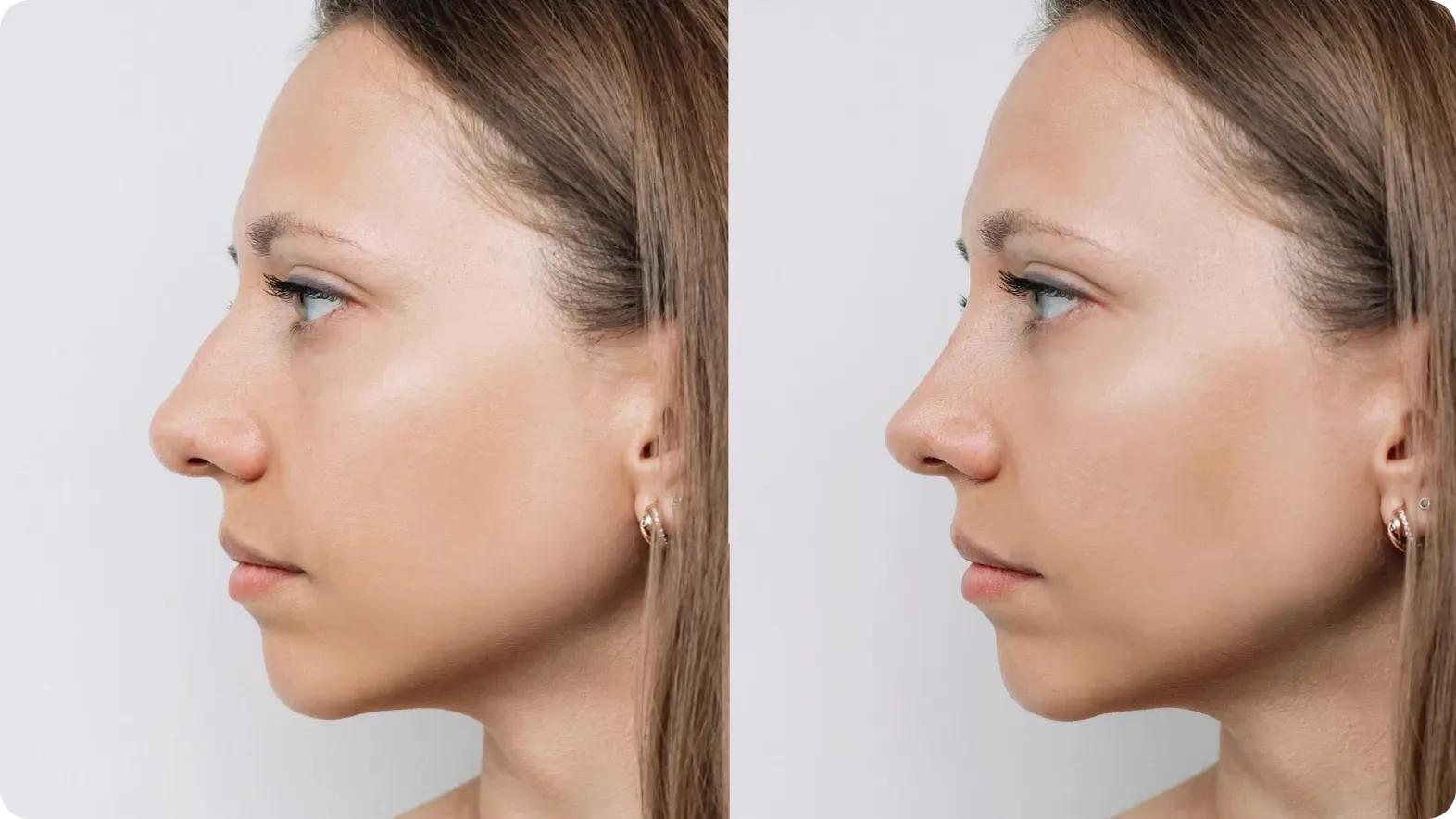Rhinoplasty Costs: What You Should Expect to Pay and the Factors That Drive Price
November 19, 2025
Rhinoplasty is famously one of the most technically demanding procedures in aesthetic surgery—and one of the most variable in price. No two noses (or goals) are identical, and a single operation can blend cosmetic reshaping with functional airway repair. In this guide, you’ll find what rhinoplasty typically costs, why those numbers swing so widely, how insurance might apply, smart ways to finance and budget, and how to weigh value beyond the sticker price so you can make a confident, informed decision.
The Rhinoplasty Price Landscape and Cost Breakdown
Typical price ranges by market and case type
The ranges below reflect common U.S. pricing. International markets can be lower or higher based on standards, currency, and facility accreditation.
Primary cosmetic rhinoplasty (no functional work)
Primary cosmetic rhinoplasty (no functional work)
- Community/smaller markets: $6,000–$10,000
- Large metropolitan areas (e.g., Dallas, Atlanta, Seattle): $8,000–$15,000
- High-cost markets (e.g., New York, Los Angeles, Miami): $12,000–$25,000
- Typically $15,000–$40,000+, depending on scar tissue, grafting needs, and surgeon expertise
- Total may resemble ranges above, but medically necessary components (e.g., septoplasty) can sometimes be billed to insurance; cosmetic work remains out-of-pocket
- Some centers abroad advertise $3,000–$8,000 packages; evaluate accreditation, implant sourcing, follow-up access, and revision policies carefully before considering purely on price
Itemized components of total cost
A comprehensive quote typically includes:
Surgeon’s professional fee: Often the largest piece. Typical ranges:
Surgeon’s professional fee: Often the largest piece. Typical ranges:
- Primary cosmetic: $5,000–$20,000
- Revision: $10,000–$30,000+
- Ambulatory surgery center (ASC): ~$1,500–$6,000 for typical cases; time-based increments may kick in after a set block
- Hospital outpatient: Often higher than ASC for the same duration
- ~$800–$3,000+, depending on case length and anesthesia group rates
- Spreader/batten grafts (autologous cartilage) are usually included; synthetic implants or allografts may add $200–$3,000
- Labs, EKG (age/medical history dependent), pregnancy test, imaging if functional components are planned: $100–$600
- Splints, dressings, and routine follow-ups are typically included; external meds/supplies can add $50–$300
Bundled pricing vs. fee-for-service quotes
- Bundled (global) quotes: One price that covers the surgeon’s fee, standard facility/anesthesia time, and typical postoperative visits. Ask about time caps (e.g., up to 3 hours OR; anesthesia included for 3 hours).
- Fee-for-service: Each component is billed separately; cosmetic portions may be billed to you directly, while functional components can be billed to insurance.
- How to compare: Request a written itemization and what triggers overage charges. Confirm whether revisions, implants, extra OR time, or 3D imaging are included.
Scheduling dynamics and timing
- Seasonal demand: Peaks around holidays and summer. Some surgeons offer off-peak discounts (hello, early spring or late summer).
- Waitlists: High-demand surgeons may be booked months out. Longer lead times can help you snag preferred dates—or better bundled rates.
- Block time: Surgeons buy OR “blocks.” Complex cases that run long can raise facility and anesthesia costs due to overages.

Clinical and Technical Drivers of Cost Variation
Case complexity factors
Approach: Open vs. closed
- Closed (endonasal) can be shorter in experienced hands and less resource intensive.
- Open provides visibility for complex reshaping—common in revisions—and often increases OR time.
- Septal cartilage (from inside the nose) is convenient when available.
- Auricular (ear) cartilage adds a minor harvest step.
- Costal (rib) cartilage adds significant operative time and recovery considerations; rib harvest can materially increase cost.
- Scar tissue and prior alterations create unpredictability, often requiring more dissection, grafting, and time.
Functional components and airway reconstruction
Common functional procedures performed at the same time include:
- Septoplasty (straightening the septum)
- Turbinate reduction (to improve airflow)
- Nasal valve repair (e.g., spreader or batten grafts) for collapse or vestibular stenosis
Patient-specific variables
- Skin thickness: Thick skin may need more structural work and grafting; thin skin calls for meticulous refinements and tip shielding—both affect time.
- Trauma or congenital deformities: Prior fractures, cleft-related deformities, or asymmetries can require advanced reconstruction.
- Prior surgeries and scar tissue: Increase complexity and lengthen operative time.
- Imaging and virtual planning: 3D photography/virtual morphing is often included for counseling; specialized 3D surgical planning or CT imaging (for complex airway issues) may add cost.
Anesthesia modality and operative time as cost multipliers
General anesthesia vs. IV sedation:
- Most rhinoplasties—especially complex or revision cases—are performed under general anesthesia.
- Some straightforward primary cases may be done under IV sedation at select centers.
- Facility and anesthesia are often billed in 15-minute increments after a base allocation. An extra hour can add $500–$1,500+.
Insurance Coverage, Coding, and Compliance Considerations
Defining medical necessity and documentation
Insurers cover functional impairment—not cosmetic tweaks. Typical requirements include:
- Symptoms affecting breathing, sleep, exercise, or quality of life, despite medical therapy (e.g., nasal steroids, allergy control)
- Nasal endoscopy
- Imaging (CT) when indicated
- Photographic documentation of external deformity affecting function (e.g., valve collapse)
- A detailed operative plan linking procedures to functional diagnoses
- Letters of medical necessity and clinic notes
Common CPT coding distinctions
Primary rhinoplasty (cosmetic/reconstructive): 30400–30420
- 30400: Primary; tip and lower lateral cartilages only
- 30410: Primary; complete external parts including bony pyramid
- 30420: Primary; including major septal repair
- 30430: Secondary; minor revision
- 30435: Secondary; intermediate revision
- 30450: Secondary; major revision
- 30520: Septoplasty
- 30140: Submucous resection of inferior turbinates
- 30465: Repair of nasal vestibular stenosis (e.g., spreader grafting/lateral wall support)
- Depending on harvest/placement, additional graft codes may apply; coding varies by payer and approach
Network status and patient financial responsibility
In-network vs. out-of-network:
- In-network surgeons/facilities accept contracted rates; your cost depends on deductible and coinsurance.
- Out-of-network billing can expose you to balance billing unless protected by state/federal laws or prior agreements.
- Many practices split billing: cosmetic fees are paid directly; functional components are submitted to insurance.
- Clarify how anesthesia and facility fees are handled when both are done concurrently.
Tax-advantaged strategies
- HSA/FSA: Eligible for medically necessary expenses (e.g., septoplasty, valve repair) but not for purely cosmetic components.
- IRS rules: Cosmetic surgery is generally not tax-deductible. See IRS Publication 502 and talk with a tax professional. Keep invoices that clearly separate functional vs. cosmetic charges.

Financing Options and Budgeting Methodologies
Payment plans and medical credit products
Medical credit cards and installment lenders (sometimes 0% APR for 6–24 months)
- Watch the deferred-interest clauses—standard APRs can exceed 25% if you don’t pay within the promo window.
- Some practices allow staged pre-op payments; few extend credit after surgery.
- Pre-qualification can show your real spending power without multiple hard pulls.
Comprehensive budgeting beyond the quote
Don’t forget the “everything else” line items:
- Surgeon and facility selection: Prices reflect training, outcomes, and OR setting (ASC vs. hospital).
- Travel and lodging: If you choose a destination surgeon, budget for flights, hotels, ground transport, and a caregiver if required.
- Prescriptions and supplies: Pain control, antibiotics (if prescribed), saline sprays, tapes/splints beyond what the practice provides.
- Postoperative visits and imaging: Confirm what’s included and for how long.
- Time off work:
- Desk jobs: Typically 7–10 days until splints are removed and bruising fades.
- Public-facing roles or heavy labor: 2–3 weeks or more.
- Consider PTO—or lost wages.
- Contingency for revision or touch-ups:
- Even with experts, 5–15% of patients may seek minor revisions. Know the potential fees upfront.
Negotiation levers and cost optimization
- Off-peak scheduling or short-notice openings: Cancellations can lower OR fees.
- ASC vs. hospital: Accredited ASCs often cost less for appropriate candidates.
- Bundled cash pricing: Can simplify billing and reduce total cost; ask about the time allowance and overage rate.
- Revision policy:
- Some surgeons reduce or waive their fee within a defined window (e.g., 1 year) for objective issues; facility/anesthesia usually still bill. Get it in writing.
Scenario planning and sensitivity analysis
Build three estimates (illustrative for a major metro primary case):
- Best-case (efficient OR time, no extras): $11,500
- Surgeon $8,500; ASC $2,000 (2 hours); anesthesia $1,000
- Base-case (average time, minor supplies): $14,500
- Surgeon $10,000; ASC $3,000 (2.5 hours); anesthesia $1,200; supplies $300
- Downside (longer case, graft/implant, overnight): $18,500
- Surgeon $11,500; ASC $4,500 (3.5 hours); anesthesia $1,800; implant $500; lodging $200

Decision-Making Framework: Evaluating Value and Mitigating Financial Risk
Assessing surgeon value beyond headline price
Board certification:
- American Board of Plastic Surgery (ABPS) or American Board of Otolaryngology–Head and Neck Surgery (ABOHNS), with Facial Plastic Surgery subspecialty (ABFPRS) where applicable.
- Surgeons who perform rhinoplasty weekly—or daily—tend to have refined techniques and processes.
- Before/after portfolios with consistent lighting/angles
- Patient-reported outcomes (e.g., FACE-Q) and revision/complication rates
- ORs accredited by AAAASF, AAAHC, or The Joint Commission suggest strong safety protocols.
Interpreting quotations and detecting exclusions
Read proposals with a detective’s eye:
- Facility time caps and per-15-minute overage rates
- Anesthesia overage and minimum billing increments
- Implant and graft costs (including costal cartilage harvest if needed)
- 3D imaging or virtual simulation fees
- Revision policy: surgeon fee, facility/anesthesia costs, timeframe, and criteria
- Postoperative visit limits and charges for late complications
- Cancellation/rescheduling fees and deadlines
- Travel and follow-up plan for out-of-town patients
Due diligence during consultations
Ask targeted questions:
- How many primary and revision rhinoplasties do you perform annually?
- What is your revision rate over the past 12–24 months? Common reasons?
- Open vs. closed approach for my case—and why?
- Will I likely need septal, ear, or rib cartilage? How does that affect time, risk, and cost?
- What functional diagnoses, if any, support insurance coverage? Will your office help with preauthorization?
- What is included in the quote? Where are the potential add-ons?
- Who provides anesthesia (MD anesthesiologist vs. CRNA), and what is the emergency protocol?
- If I need a revision, what fees would apply?
- Board certification status
- State medical board records for disciplinary actions or malpractice
- Facility accreditation
Comparative case studies: Price vs. value
Lowest-bid scenario:
- A $7,500 quote includes a 2-hour ASC block and 90-day follow-up. The case runs 3.25 hours, incurring $1,400 in overages; subtle tip asymmetry later requires revision with new facility/anesthesia charges. Total cost over 18 months exceeds $12,000—not counting extra time off work and stress.
- A $13,500 comprehensive quote from a high-volume facial plastic surgeon includes 3 hours OR time, robust preoperative planning, and a defined revision policy. No overages occur; the outcome meets both cosmetic and airflow goals. Total cost stays the same—and the probability of revision is lower, reducing long-term risk.
Conclusion
Rhinoplasty pricing reflects a complex mix of surgeon expertise, facility setting, anesthesia, case complexity, and whether functional reconstruction is involved. In high-cost U.S. markets, primary cosmetic cases commonly run $8,000–$20,000, and revisions can reach $15,000–$40,000+ because of the technical demands. Insurance may offset medically necessary components like septoplasty or valve repair, but cosmetic changes remain out-of-pocket.
To make a sound decision, insist on transparent, itemized quotes; understand time caps and potential overages; and evaluate surgeon value by training, volume, outcomes, and safety infrastructure—not price alone. Build a realistic budget that includes travel, time off work, and a contingency reserve, and consider off-peak scheduling or bundled pricing when it makes sense. Most importantly, choose a qualified rhinoplasty specialist whose approach fits your goals and whose policies clearly define your financial exposure. Do that, and you’ll minimize surprises—and maximize the long-term value of your investment in both form and function.
To make a sound decision, insist on transparent, itemized quotes; understand time caps and potential overages; and evaluate surgeon value by training, volume, outcomes, and safety infrastructure—not price alone. Build a realistic budget that includes travel, time off work, and a contingency reserve, and consider off-peak scheduling or bundled pricing when it makes sense. Most importantly, choose a qualified rhinoplasty specialist whose approach fits your goals and whose policies clearly define your financial exposure. Do that, and you’ll minimize surprises—and maximize the long-term value of your investment in both form and function.

Schedule Your Appointment with Dr. Mourad
If you are considering facial plastic surgery and want results that enhance your natural beauty without looking overdone, schedule a consultation with Dr. Moustafa Mourad today. You will receive personal, expert guidance at every step—from your first visit to your final result.
From Our Blog

December 10, 2025 | Dr. Moustafa Mourad | Uncategorized
The Benefits of Yoga for Mental Health: Evidence-Based Mechanisms, Applications, and Outcomes
Mental health care is increasingly blending the best of behavioral science with body-based practices. Enter yoga—postures (asana), breath regulation (pranayama), and meditation (dhyana)—a practice with a steadily growing research base.
READ THE ARTICLE
December 10, 2025 | Dr. Moustafa Mourad | Uncategorized
Am I a Good Candidate for Rhinoplasty? Key Considerations in Anatomy, Health, and Expectations
Rhinoplasty isn’t one single operation—it’s a toolkit of techniques that reshape the nasal framework to improve how your nose looks, works, or both. The two main approaches—open (external) and closed (endonasal)—are simply different ways to reach the same anatomy.
READ THE ARTICLE
December 8, 2025 | Dr. Moustafa Mourad | Uncategorized
Ethnic Rhinoplasty: Respecting Heritage and Identity Through Tailored Surgical Technique
Elective facial surgery is powerful. It can boost confidence, restore function, and reshape how someone is viewed—and how they view themselves. That’s especially true with rhinoplasty. “Ethnic rhinoplasty” isn’t a separate operation;
READ THE ARTICLE
December 8, 2025 | Dr. Moustafa Mourad | Uncategorized
Non-Surgical Alternatives vs. Surgical Rhinoplasty: What You Need to Know About Liquid Rhinoplasty (Filler) Versus Surgery
Elective changes to the nose sit right where aesthetics meets function. Some people want to smooth a small hump without taking time off work; others need true structural change and better airflow. Today, you’ve basically got two very different routes.
READ THE ARTICLE